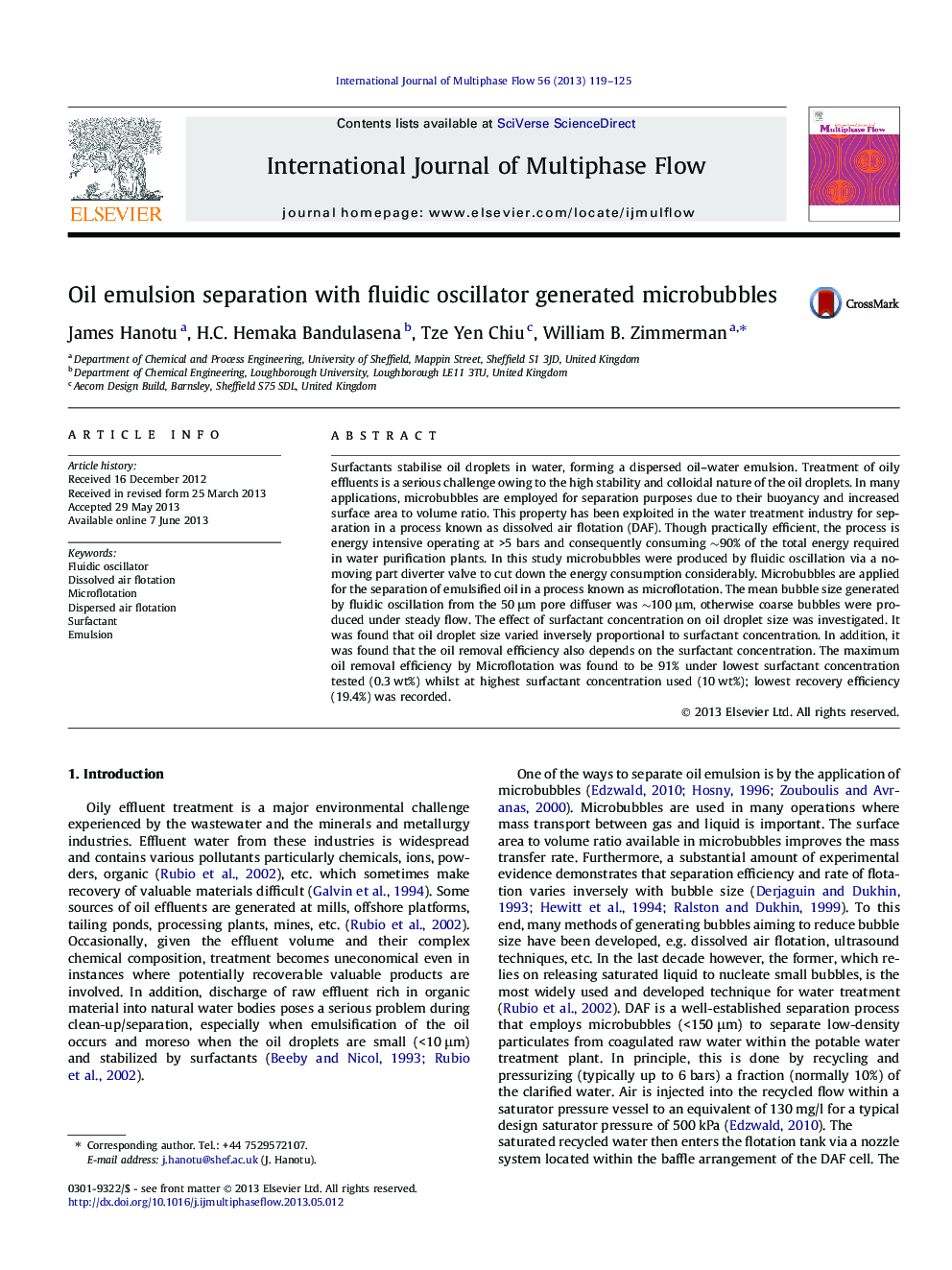| Article ID | Journal | Published Year | Pages | File Type |
|---|---|---|---|---|
| 667320 | International Journal of Multiphase Flow | 2013 | 7 Pages |
Abstract
Surfactants stabilise oil droplets in water, forming a dispersed oil-water emulsion. Treatment of oily effluents is a serious challenge owing to the high stability and colloidal nature of the oil droplets. In many applications, microbubbles are employed for separation purposes due to their buoyancy and increased surface area to volume ratio. This property has been exploited in the water treatment industry for separation in a process known as dissolved air flotation (DAF). Though practically efficient, the process is energy intensive operating at >5 bars and consequently consuming â¼90% of the total energy required in water purification plants. In this study microbubbles were produced by fluidic oscillation via a no-moving part diverter valve to cut down the energy consumption considerably. Microbubbles are applied for the separation of emulsified oil in a process known as microflotation. The mean bubble size generated by fluidic oscillation from the 50 μm pore diffuser was â¼100 μm, otherwise coarse bubbles were produced under steady flow. The effect of surfactant concentration on oil droplet size was investigated. It was found that oil droplet size varied inversely proportional to surfactant concentration. In addition, it was found that the oil removal efficiency also depends on the surfactant concentration. The maximum oil removal efficiency by Microflotation was found to be 91% under lowest surfactant concentration tested (0.3 wt%) whilst at highest surfactant concentration used (10 wt%); lowest recovery efficiency (19.4%) was recorded.
Related Topics
Physical Sciences and Engineering
Chemical Engineering
Fluid Flow and Transfer Processes
Authors
James Hanotu, H.C. Hemaka Bandulasena, Tze Yen Chiu, William B. Zimmerman,
